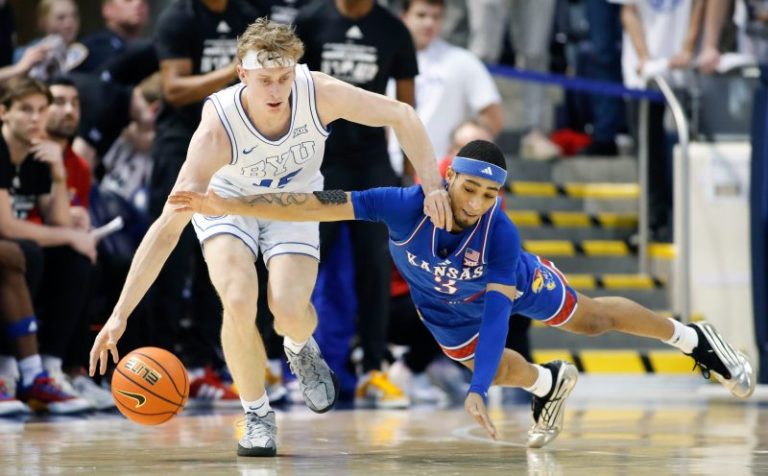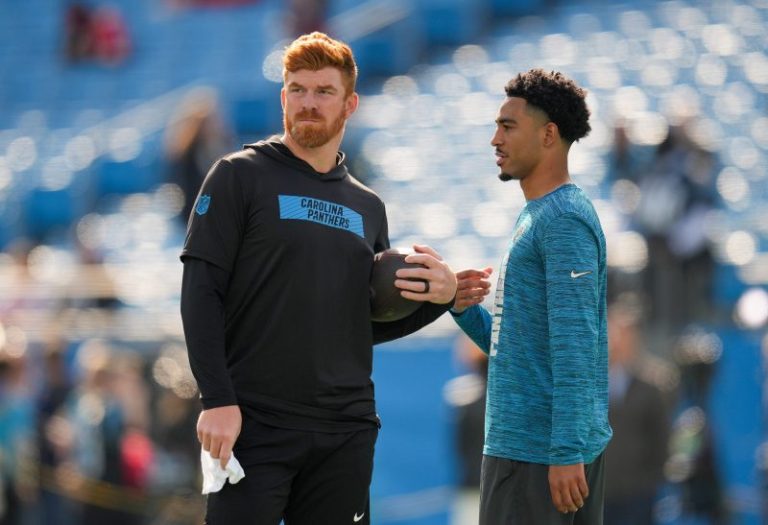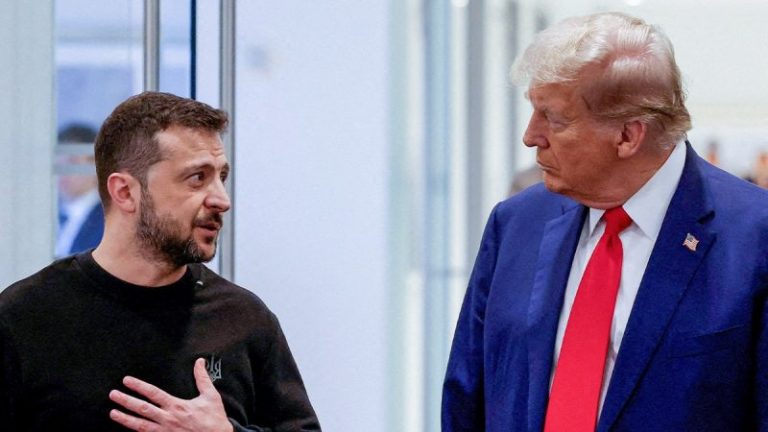BRADENTON, Fla. – Sure, it’s the season of eternal hope in Major League Baseball, but after the defending champions spent much of the winter commandeering talent and unlocking their vast resources, consternation is king.
From New York Yankees owner Hal Steinbrenner to legions of smaller-market fans insistent that the playing field must be leveled, the Los Angeles Dodgers are forcing the haters to cry foul, to insist that billion-dollar outlays each winter and establishing a beachhead for international talent is just a tad excessive.
Yet executives for rival teams faced with slaying the Dodgers know money doesn’t buy everything.
Championship parity has been well-chronicled since the Yankees’ run of three consecutive World Series titles ended in 2000; no one’s repeated since then.
Follow every MLB game: Latest MLB scores, stats, schedules and standings.
In this high-information era in baseball, however, the path to both the playoffs and a pennant can take many routes. And while the game’s past quarter century has vastly altered the industry, some combination of organizational intelligence and work environment, resources and ownership desire to win are likely the most important factors to success.
As the Dodgers aim for their 13th consecutive playoff berth this season, it’s evident that those factors are now unleashed with the full force of the game’s unbreakable machine.
“They’ve been one of the best-run organizations for forever,” Atlanta Braves general manager Alex Anthopoulos tells USA TODAY Sports. “They always have a great team. They make the playoffs every year. They’re going to be at the top end of the payroll structure, they draw 4 million fans a year. They just make good decisions.
“They’ve earned it. They’ve earned all of it. They’ve earned their World Series. I expect the large-market, well-run clubs with resources to do what they’re doing and get better.
“I don’t understand the concern or complaints. It doesn’t make any sense to me.”
So, what matters most for success? It helps to ask those that have seen all ends of the payroll spectrum.
Fix the alignment
David Stearns ascended to an assistant general manager role in Houston as the Astros were breaking the industry more than a decade ago, was tapped to run the show in small-market Milwaukee and now has an enviable position in New York: Spending Steve Cohen’s money.
Yet the Mets’ president of baseball operations hasn’t strayed from the nation-building practice he developed in Milwaukee, where the Brewers remain a consistent playoff participant three seasons after he stepped down from the top job there.
It absolutely doesn’t hurt when your boss finds $765 million to commit to Juan Soto. It also doesn’t much matter when the infrastructure can’t maximize that investment.
“What’s most important is alignment,” says Stearns when asked whether the money, the culture or the organizational commitment is key to franchise happiness. “From ownership through the front office through the clubhouse, coaches and players – that’s what we’re seeking.
“And ensuring that everyone is rowing in the same direction, has the same core principles – that is the most powerful of all. And all those other things – resources and aptitude – plays into that.”
The Mets have the potential to become Dodgers East, if only because the financial structure is in place thanks to their large market and Cohen’s estimated $21.5 billion net worth. Yet Stearns finds value looking back on what worked so well in Milwaukee, where the Brewers have made the playoffs six times in the past seven seasons.
“There are tremendous people there, at all levels of the organization there are just really, really talented,” he says. “Great coaches, great scouts, the front office is filled with people who one day will lead organizations if they want to and have a lot of success doing it.
“They have an ownership group that is extremely competitive and wants to do everything within their power to win. That is a big group of very skilled and talented people who work very well together, and they will continue to produce great results.”
In Milwaukee, Stearns navigated the financial parameters that come with working in the nation’s 38th-largest media market. In Houston, the Astros were on the leading edge of ruthless efficiency, with many of their practices adopted throughout the industry.
Yet in his new job, he’s not about to stand in front of the franchise owner and say, “Mr. Cohen, paying Juan Soto $765 million is simply not efficient!”
“I don’t view anything that Steve has done during his ownership tenure as irrational,” says Stearns, whose club will carry a payroll of around $320 million and owe tens of millions more in luxury tax penalties. “I think he’s operating with different levels of constraints than other organizations are. He has different priorities than other organizations.
“My job is to ensure we’re making decisions that allow us to compete continuously at a really high level for a long time. That doesn’t preclude spending money now. We just have to make sure that we’re also setting ourselves up well for the future.”
The vast majority of big league franchises will not have access to the revenues the Dodgers and Mets and Yankees and Red Sox enjoy. How, then, to close the gap?
Know thyself, for one.
Decide what to be and go be it
Ben Cherington took over the dying embers of the Red Sox’s mini-dynasty and worked the edges to produce a 2013 World Series title in Boston. His time with the Pirates has been more challenging, with the automatic constraint of owner Bob Nutting essentially sitting out the free agent market, even as Pittsburgh is ranked 27th in Nielsen market size while San Diego, say, ranks 30th.
Cherington draws some inspiration from across Lake Erie, where the Cleveland Guardians have identified one great thing that they do – acquiring and developing pitching – and reached the playoffs six of the past nine years, including the 2024 ALCS.
“Cleveland is a team I really respect,” says Cherington. “The teams that I perceive the most consistently successful, agnostic to resources, are the ones that are the most dogged about constant innovation and improvement in all aspects of team-building. But also, very clear about what they’re going to sell out to in those areas.
“They’re not trying to do a thousand new things a day. They’re confident in what they’re going to do. They sell out to that.”
Cherington says the Dodgers’ ability to replenish talent when employees leave for promotions makes them a model. And in a copycat industry, conviction and innovation can be separators.
“Those teams don’t put themselves in position where they’re chasing someone else’s tactic,” he says. “If you wait to see, ‘Oh, one team’s doing that. We’ve got to catch up to that,’ you’re going to be consistently chasing that.
“It’s, where do we zig where no one has yet? The good organizations are willing to do that.”
Culture clubs
And it doesn’t hurt when the front office isn’t a bad place to work. The Tampa Bay Rays have been outkicking their revenue streams for nearly 20 years and reached the postseason five consecutive years until 2024.
Sure, they lose talent beyond the players they can’t afford – three former Rays proteges are chief baseball officers across the big leagues. But many, many more stick around.
“I was there for 15 years. I worked with the same people for a long period of time,” says second-year Miami Marlins GM Peter Bendix. “They are phenomenal people and ultimately, this game is about that: Players are people. Front office people are people. Fans are people.
“It’s all about having people pull in the right direction, as one. It’s a really hard thing to achieve. You have 200-plus staff and 165-plus players to try to get everyone pulling in the right direction.
“But when you do, you can really unlock some incredible things.”
Like Stearns, current Rays GM Erik Neander cites “alignment, top to bottom,” as a crucial attribute, and what he calls “a shared, deep understanding of your situation.”
“Just knowing who you are,” he says. “Continuity – we’ve had unbelievable continuity without complacency.”
Neander and Bendix and incoming St. Louis GM Chaim Bloom all worked under former Rays GM Andrew Friedman, who now runs the show at Dodger Stadium. It’s been a meticulous buildup, now spanning more than a decade, but like an indomitable football team, the Dodgers are essentially unbeatable in all three phases of the game.
Only one has to do with owner Mark Walter’s checkbook.
“The constant there is Andrew Friedman,” says the Braves’ Anthopoulos, who worked as an assistant GM for Friedman in between chief baseball officer jobs in Toronto and Atlanta. “He did it in Tampa with no resources and he’s done it there.
“Management is what it comes down to. They have the best GM in the game. Put resources in it, it will likely increase your odds. But I competed against him with Tampa in the AL East. What’s the common denominator? Andrew Friedman.
“I expect them to be good as long as he’s there.”
He’s not the only one: When Shohei Ohtani signed his $700 million contract, his only opt-out clause was tied to whether Friedman or Walter, the owner, were no longer in their respective positions.
The signing of Japanese right-hander Rōki Sasaki best illustrates that the Dodgers are a destination regardless of cash flow, since Sasaki’s signing bonus was restricted to teams’ international signing pool.
But he chose L.A., as did countryman Yoshinobu Yamamoto when similar $325 million offers were available elsewhere. Of course, the money helped.
But the brainpower and desire to win are just as palpable.
“It’s really hard to get to the top of the mountain without all three of them in some combination,” says Baltimore Orioles executive vice president Mike Elias.
“Those guys have everything going for them right now.”
The USA TODAY app gets you to the heart of the news — fast. Download for award-winning coverage, crosswords, audio storytelling, the eNewspaper and more.










